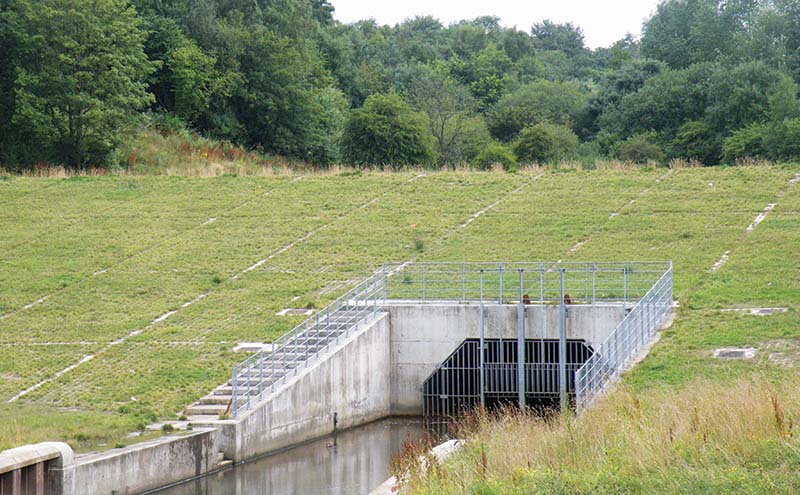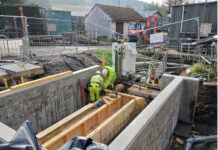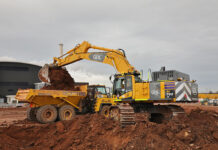
With increased demand for grass paving to driveways, access roads and parking for both commercial and domestic applications, there are certain aspects of both ground conditions and utilisation that building specifiers and installers should consider. Robert Howden, managing director of Grass Concrete Limited, explains more…
TODAY’S wide choice of grass paving systems means that specifiers now have a wide choice of products, together it seems with an equally wide range of performance and sustainability claims.
Without the clear guidelines of an industry standard it could be possible to end up with a product that might be fine in the short term, but will not stand the test of time, and in turn, not achieve any degree of sustainability. As a supplier of grass paving systems for more than 40 years, we see the need for a strict fit for purpose policy as the key to achieving sustainability in any construction project.
Take for example a car park in daily use; will the grass cover and then the structure stand up to that sort of regime? If the application is to slopes, will it function as an armouring layer and will it offer grip? These are the sort of challenging questions that that should be asked to ensure a correct specification.
This perhaps leads onto another question – the appropriate use of grass paving. Our policy is to guide our clients to whichever system is most appropriate to their need be it insitu concrete, pre-cast concrete or plastic systems. This features a tailored fit for purpose response to enquiries and crucially it also means that we are able to say no to what we feel are inappropriate uses for a particular system.
FIT FOR PURPOSE
When considering a design there are a few “golden rules” that can help the process if applied as a checklist.
“The paving will be rarely used” is a fairly common statement often used to drive down the specification to “affordable” levels. Think however about the potential for unplanned heavy use such as from refuse and skip vehicles. For fire appliances think about the need to support fire appliances on what is likely to be saturated ground conditions – emergency access roads on housing building estates/commercial properties have to support the weight of the latest fire and access vehicles.
Policy in this respect is also shifting towards the use of Combined Aerial Rescue Platforms (CARP), a hybrid of pump appliances and hydraulic platforms. This benefits fire brigades in limiting the required number of appliances but places a requirement on the developer to provide for minimum loads that shift from 12 to 13.5 tonnes detailed in the Building Regulations up to new figures that currently stand at 18 tonnes. Consideration to future proofing design to take account of this trend ought therefore to be made.
Many grass paving systems rely upon grass to anchor the system in place, be this through root network or the skin friction from grass filled joints that helps to create a tensile layer.
The combination however of seasonal variation in growth and frequency of use can often over-stress the grass. This can then see paving units being singularly submitted to compressive loads, so inducing a process of progressive failure. The sustainability of grass cover is best guaranteed by a system that promotes permeability whilst at the same time ensuring that this process is balanced and not prone to being over-reached in flash rainfall scenarios, the depth and shape of the soil pockets therefore has a critical part to play if grass cover is to be sustained.
It’s a growing concern to us that we are being increasingly approached by clients looking to replace failed areas of cellular plastic pavers, re-emphasising the need for specifiers to consider fit for purpose systems – this is key to the industry reputation of grass paving generally.
WEIGHT LOAD IMPACT
In most instances ground reinforcement failure often stems from either an inability to accept weight load or an issue of waterlogging causing loss of grass and weakened support; with in some cases each of these problems being evident.
As part of our own commitment to “Fit for Purpose” we recommend careful consideration of grass paving types, particularly when likely to be subjected to frequent traffic.
A relatively thin layer plastic paver might for instance appear, from a manufacturer’s test information, to match and indeed exceed the capability of structurally designed reinforced concrete. Such test results are however for the most part laboratory derived and assume a level of underlying support that sees the units needing to be crushed to fail.
This isn’t however the normal mode of failure when applied to a job site, this instead is usually by a mechanical failure that sees substrate being pumped through to the surface under a trampolining motion.
This problem becomes more likely where plastic pavers are gravel infill for traffic use – with no grass to provide tensile anchorage, vibration across the surface will naturally cause a sieving effect that can lead to loss of gravel through into the base below or the gravel can also rotate with an abrasive effect on the side walls of the plastic grids. In each case the likely outcome is a break-up of the structure.
With a long established history of installations we are uniquely placed to work closely with engineers and architects alike to recommend appropriate systems – sometimes in combination – where certain areas can be effectively maintained with plastic, and other areas more vulnerable to traffic potential are essential for concrete alternatives.
GROUND CONDITIONS
Critical to performance will be the below ground conditions. For traffic applications we recommend a sub-base, the depth of the sub-base should be based upon the condition of the ground relative to the required bearing capability.
Most circumstances will see a sub-base depth of 150mm as being sufficient, this should however be proportionately increased where CBR values of 4% or less are encountered. Care should also be taken in specifying the type of sub-base.
DOT type 3 materials may suggest high rates of percolation but they will likely as not draw through the sand blind and topsoil fill into the voided structure below.
A type 1 material may have a lesser degree of percolation but it provides a greater consistency both in grading and in availability. For non-traffic applications such as slope protection works, there is no requirement for a sub-base; on very steep slopes the placement and compaction of a sub-base could in any case be problematic.
The key requirement on slopes is to prepare the sub-grade to a reasonable line and level; the finished level will tend to reflect that of the formation level.
Excessive use of sand regulating layers should be avoided as this can lead to washout.
For watercourses we recommend the installation of a geo-textile of appropriate flow rating below the paving layer. This prevents a loss of sub-grade should any soil pockets be washed out under water flow.
“Sustainable Urban Drainage” is becoming an increasingly used term with planners and developers seeking to mitigate the implications of handling surface water run-off and its implications for the local storm water network, as well as introducing the prospect of rain water harvesting for ecological design.
With the notion that grass reinforced systems can permeate at up to 90% the rate of natural grass a safe lag time can be achieved.
Storing water within the system with low risk of ponding until the ground can naturally re-charge is a significant benefit but requires a system that can offer a sufficient storage head to avoid surface flooding from “quarts into pint pots” issues.
Lag time is beneficial in the prevention of flooding and can be extended by introducing an underlying drainage blanket across the full extent of the paved area. The drainage blanket can be used to either attenuate permeation to the water table or be a vehicle for rainwater harvesting.
Grasscrete can and does combine with proprietary forms of sub-ground attenuation. Our own experience tells us however that a more uniform percolation process, using a relative thin layer medium across the site can often create a more natural balance. This also helps by minimising the permanent and temporary works implications of digging large holes in the ground.
Grass paving systems have an increasing role to play in the development and sustainability of harmonised urban landscapes. All we ask is that you fully question and fully consider what may be put before you.










